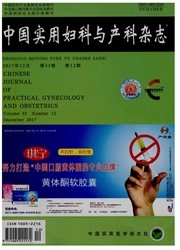

 中文摘要:
中文摘要:
目的了解育龄妇女生殖道感染(RTI)者中相关病原体的流行情况,初步探讨RTI中多种病原体的相互关系。方法对2005-03—2005-12东南大学附属中大医院354例妇科门诊育龄妇女进行妇科检查、各种RTI病原体的实验室检测以及流行病学调查。用叉生分析方法分析解脲支原体与其他病原体混合感染中的交互作用。结果生殖道解脲支原体和人型支原体的检出率分别为73.4%和47.6%;衣原体、线索细胞、假丝酵母菌和滴虫的检出率分别为17.8%、19.8%、15.9%和4%。叉生分析结果提示解脲支原体分别与衣原体、假丝酵母菌、加德纳菌等具有相乘和相加的交互作用。结论本地育龄妇女支原体的检出率较高,解脲支原体与女性生殖道其他常见病原体的混合感染对RTI的发生有协同作用。
 英文摘要:
英文摘要:
Objective To investigate the infectibn status of related pathogen of child-bearing women in reproductive track infection,and to discuss the interaction among kinds of pathogen infection in female reproductive track. Methods The survey was made in to 354 eligible women from the gynecologic clinic of the Affiliated Zhongda Hospital of Southeast University. Samples were done gynecologic examination and RTI laboratory diagnosis. Standardized questionnaire on epidemiological study was designed to collect the information about RTI related behaviors and history of marriage and childbearing. Analysis was done on interaction between Ureaplasma urealytium and other pathogen mixed infection by crossover analysis. Results The positive rate of Ureaplasma urealytium and Mycoplasma hominis was 73.4% and 47. 6% respectively, Chlamydiae trachomatis 17.8% ,Candida albicansl5.9% ,clue cell 19. 8%, Infusorian 4% o The results by crossover analysis showed that it could reforce action between Ureaplasma urealytium and other pathogens respectively. Conclusion The rate of mycoplasma is much higher in female genitalia;there is coaction between Ureaplasma urealytium and other pathogen mixed infection in female reproductive track infection to RTI.
 同期刊论文项目
同期刊论文项目
 同项目期刊论文
同项目期刊论文
 期刊信息
期刊信息
